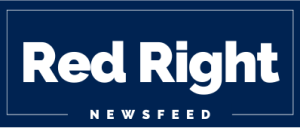Republicans in Washington are entering the second half of 2025 with renewed momentum as they set their sights on a highly favorable Senate map in the 2026 election cycle. On Tuesday, the Senate Leadership Fund (SLF)—the main super PAC aligned with Senate Republicans—reported a record-shattering $85 million haul in the first half of the year, more than doubling its previous fundraising high and giving the GOP a commanding early advantage.
The numbers highlights a few key developments: the rising influence of Senate Majority Leader John Thune (R-SD), the strategic involvement of President Donald Trump, and a sharper focus on both defending vulnerable incumbents and flipping Democratic-held seats in battleground states.
SLF executive director Alex Latcham, who now co-leads the group alongside former Sen. Cory Gardner (R-CO), credited Trump’s closer involvement post-McConnell as a catalyst for this cycle’s early success. “We’re working with [the White House] to identify and vet Senate candidates,” Latcham told Axios, emphasizing the frequency of contact with Trump’s team and his influence on primary dynamics.
This comes as Republicans prepare for tough races in states like Georgia, North Carolina, Maine, Alaska, and Nebraska, while also guarding against intraparty threats, notably in Texas, where Sen. John Cornyn faces a potential primary challenge from Attorney General Ken Paxton. Paxton currently leads Cornyn in early polling.
The scope of the financial war chest is notable:
-
$85 million raised in just six months across SLF and its network.
-
$83 million in cash on hand heading into the second half of 2025.
-
The SLF alone holds $29 million, triple its reserves at this time in 2023.
By comparison, SLF raised $38 million in all of 2023. Latcham says that not only has fundraising improved under Thune, but GOP enthusiasm is also being driven by the second Trump administration’s start, particularly among newly active groups such as the crypto investment community.
Looking ahead, the SLF plans to lean heavily into digital ad buys, targeting younger, harder-to-reach voters—especially those disengaged from traditional media. These “cord-cutters,” Latcham noted, will be reached through streaming platforms and online political content, with a strong emphasis on mobilizing Trump-aligned voters who may skip midterm elections.
While Democrats face a tough 2026 map, Republicans know their Senate majority is far from guaranteed. But with historic fundraising, tight coordination with Trump’s political machine, and early investments in media strategy, the GOP is aiming not just to defend, but expand its Senate majority in the next election cycle.
As Latcham made clear:
“What will not change is that SLF will continue to be the preeminent outside group dedicated to keeping and expanding the Senate Republican majority.”



